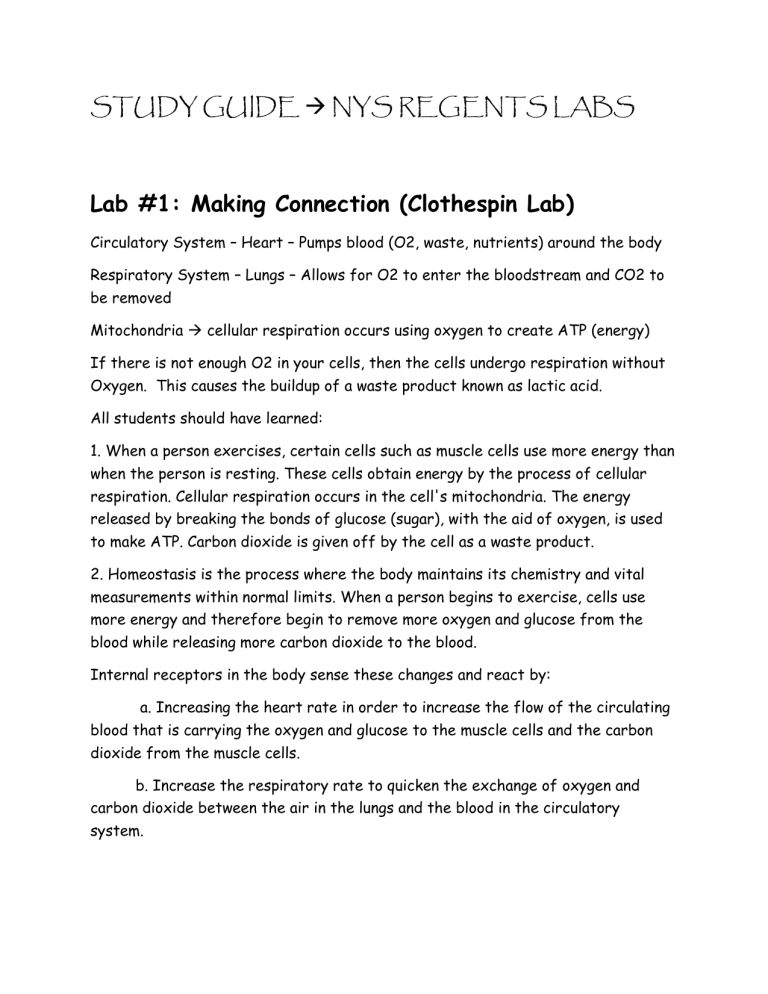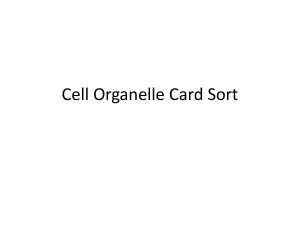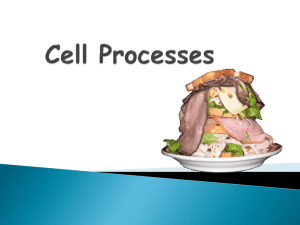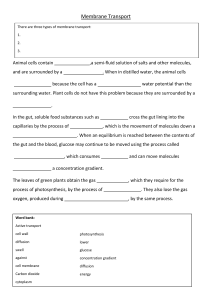STUDY GUIDE Living Environment state labs (diffusion and making connections)
advertisement

STUDY GUIDE NYS REGENTS LABS Lab #1: Making Connection (Clothespin Lab) Circulatory System – Heart – Pumps blood (O2, waste, nutrients) around the body Respiratory System – Lungs – Allows for O2 to enter the bloodstream and CO2 to be removed Mitochondria cellular respiration occurs using oxygen to create ATP (energy) If there is not enough O2 in your cells, then the cells undergo respiration without Oxygen. This causes the buildup of a waste product known as lactic acid. All students should have learned: 1. When a person exercises, certain cells such as muscle cells use more energy than when the person is resting. These cells obtain energy by the process of cellular respiration. Cellular respiration occurs in the cell's mitochondria. The energy released by breaking the bonds of glucose (sugar), with the aid of oxygen, is used to make ATP. Carbon dioxide is given off by the cell as a waste product. 2. Homeostasis is the process where the body maintains its chemistry and vital measurements within normal limits. When a person begins to exercise, cells use more energy and therefore begin to remove more oxygen and glucose from the blood while releasing more carbon dioxide to the blood. Internal receptors in the body sense these changes and react by: a. Increasing the heart rate in order to increase the flow of the circulating blood that is carrying the oxygen and glucose to the muscle cells and the carbon dioxide from the muscle cells. b. Increase the respiratory rate to quicken the exchange of oxygen and carbon dioxide between the air in the lungs and the blood in the circulatory system. c. Increase the release of glucose by the liver, as directed by hormones from the pancreas. d. If the body becomes warm, blood, carrying heat, will be directed towards the skin and the body will begin to sweat. As the sweat evaporates, heat is carried away from the skin, cooling the body (feedback mechanism). Systems Circulatory Responses Indications 1. Heart rate (pulse) increases 2. Blood flows quicker Respiratory 1. Breathing rate increases 2. Breathing depth increases Endocrine . Pancreas releases a hormone Nervous Increase impulses from brain 1. An increase flow of oxygen and glucose flow to the muscle cells while carbon dioxide is moved away quicker. 2. An increase flow of carbon dioxide to the lungs and oxygen away from the lungs. 1. An increase supply of air in the lungs. Oxygen diffuses from the air into the blood while carbon dioxide diffused from the blood into the air in the lungs. 1. Glucose (sugar) is released into the blood by the liver. 1. The heart beats faster. 2. Blood vessels dilate (open) allowing greater blood flow. 3. If the body is warm, sweat begins to flow. 4. Muscle fatigue is mainly caused by two factors, a lack of oxygen and/or glucose, and/or the build-up of wastes. When muscle cells do not get enough oxygen, a substance called lactic acid is produced. If a sufficient quantity of lactic acid is present, the muscle will begin to stiffen or cramp. This actually helps the person by preventing damage to the muscle due to over exercising. Diffusion through a Membrane All students should have learned: 1. Movement of molecules through a membrane by diffusion mostly depend on two factors: a. Size of molecule - Small molecules can move through the membrane while large molecules cannot. Water, glucose, oxygen and carbon dioxide are small molecules and can move through the cell membrane by simple diffusion. Starch, proteins and DNA are large molecules and cannot move by diffusion through the membrane. b. Concentration of molecule: The molecules will move from areas of greater concentration to areas of lower concentration. Three cases concerning water are: - Distilled water is 100% water. Distilled water will move through a membrane to a area where there is less than 100% water. - 95% Water, 5% salt will draw water out of a cell, causing the cell to shrink because there is a greater concentration of water in the cell. (Putting salt on a slug will cause it to lose water and shrivel up.) - If the concentration of water is the same on both sides of the membrane, there is no net movement of water Movement of water If you place a cell into areas with LESS WATER and MORE SALT the water will move out of the cell and it will shrivel If you place a cell into areas with more water and less salt the water will rush into the cell and it will burst!



